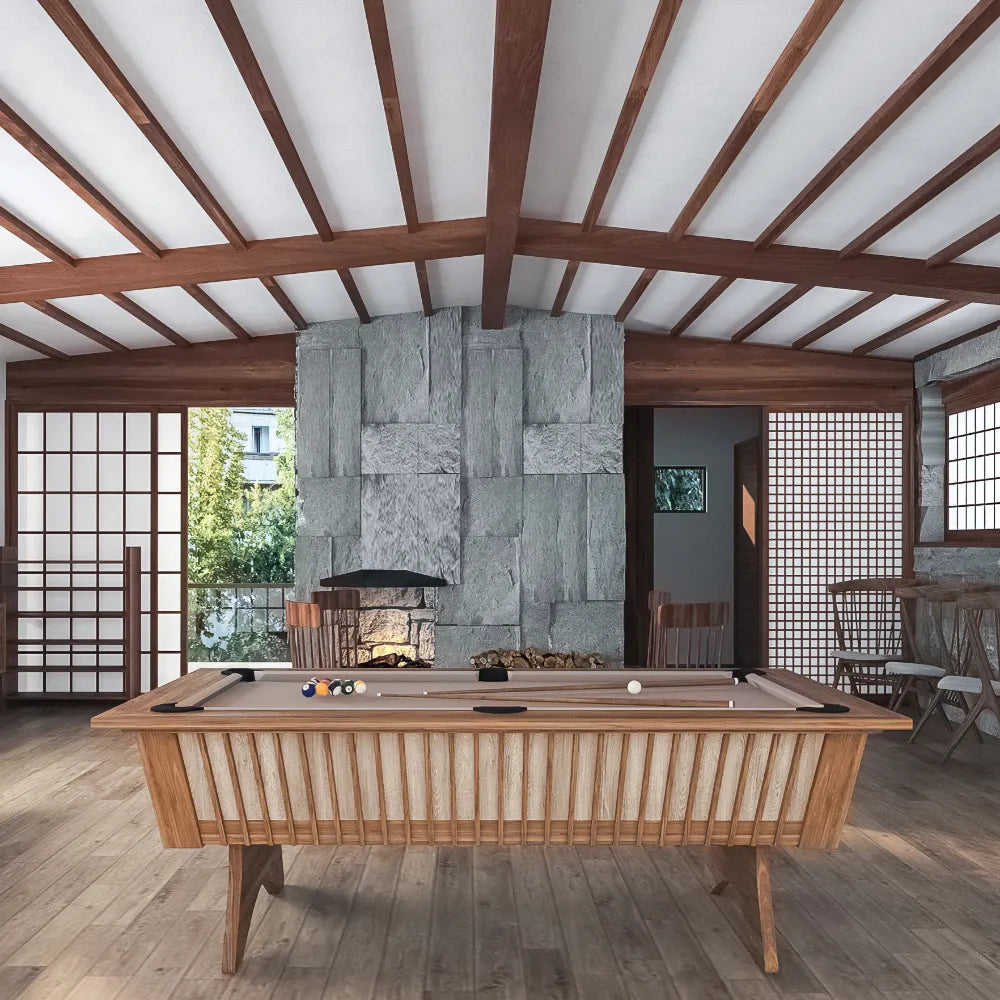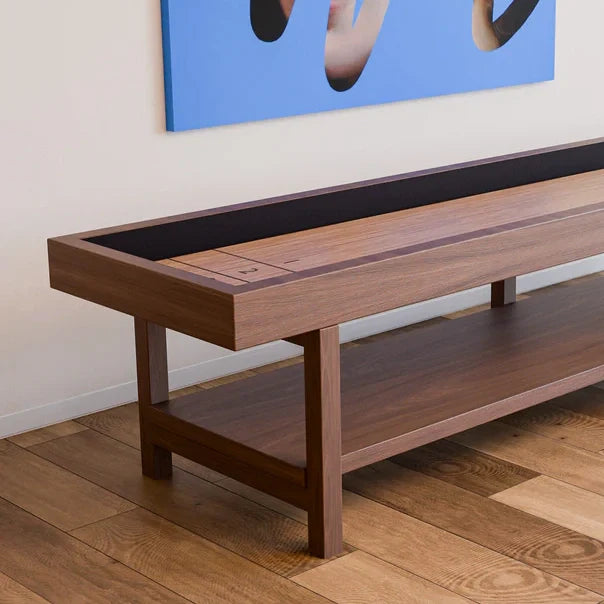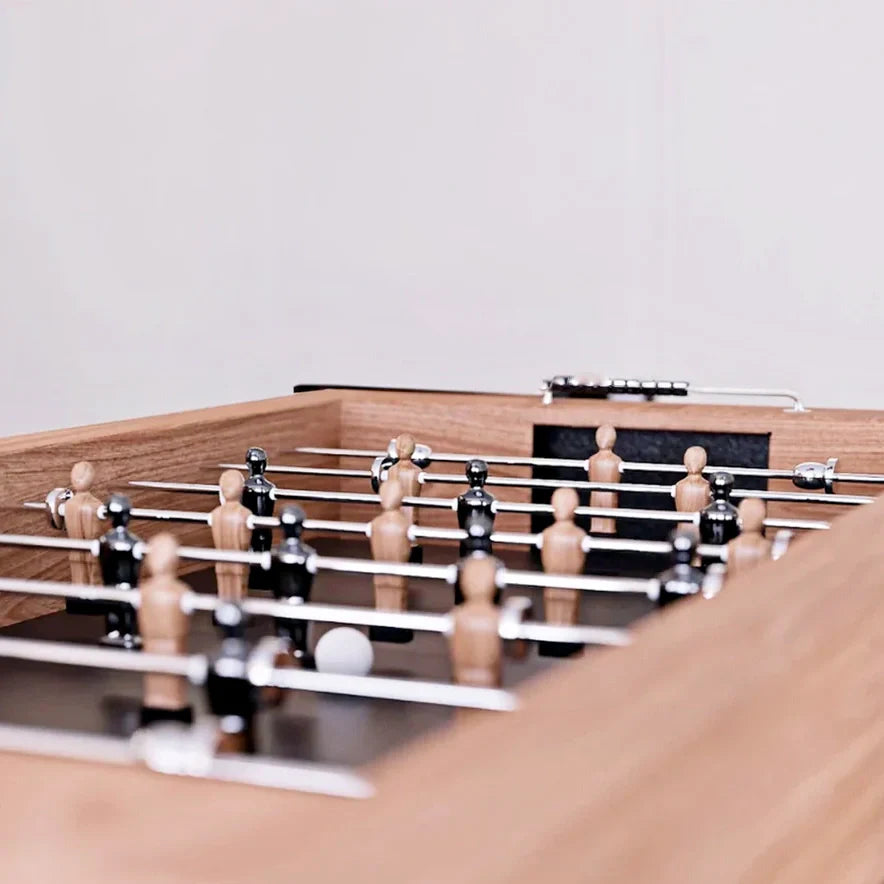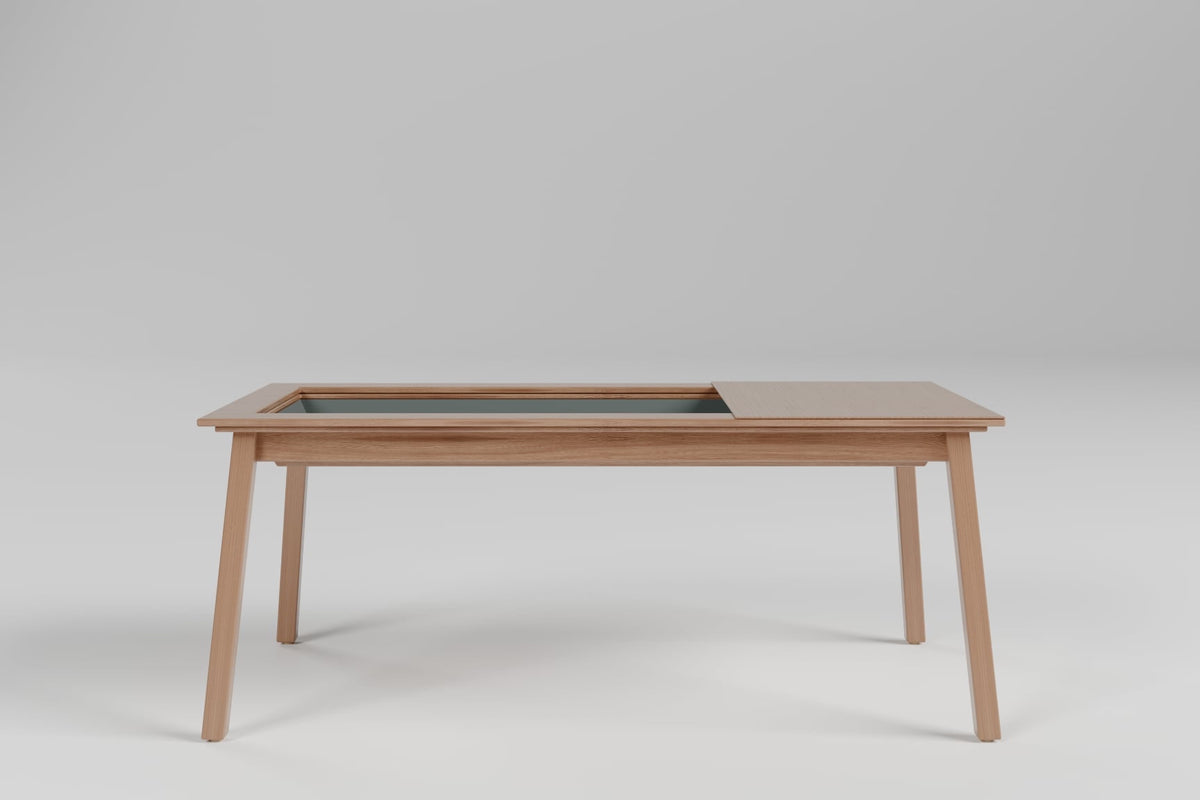When shopping for a modern pool table, one material appears again and again: slate. Slate is the gold standard for anyone who wants professional-level performance because it offers unmatched flatness, long-term stability, and the precise ball response required for serious play. This guide explains what slate is, why it matters, and what to look for when choosing a slate pool table for your home.
What Is Slate?
Slate is a natural stone formed over millions of years through the compression of mineral layers. It can be milled into an extremely flat and stable surface, which makes it the ideal foundation for a pool table. Unlike wood or composite substitutes, slate does not warp, swell, or change shape over time. When installed correctly, it maintains a true and consistent playing plane.
Why Slate Matters for Performance
Slate’s biggest advantage is its ability to achieve perfect flatness. Even a slight dip or rise in the surface can cause balls to drift, wobble, or roll unpredictably. Serious players notice these imperfections immediately, and they can completely ruin the accuracy of a shot. Slate eliminates this problem by offering a highly precise and consistent surface.
Another benefit is long-term stability. Slate does not expand or contract with humidity or temperature changes, so the table requires fewer adjustments over the years. Homeowners appreciate this because it means the table stays level and reliable for a long time.
Slate also enhances ball response. Its density and rigidity create predictable rebounds off the cushions and consistent roll speeds across the table. Players experience better control over spin, speed, and position play because the table behaves the same way every time.
Finally, slate naturally absorbs vibration. This reduces unwanted rattling or flex in the playing surface and creates a more solid, satisfying feel with every shot.
Slate Configurations and What They Mean
Slate pool tables typically come in one of two configurations. Single-piece slate uses one continuous slab. This option is more common in commercial environments or smaller tables, but it is extremely heavy and can be challenging to maneuver in tight spaces.
The more popular choice for homes and professional installations is three-piece slate. The slate is divided into three precisely milled sections that fit together on a leveling frame. This design makes transportation easier and allows for extremely accurate leveling, even on floors that are not perfectly even.
Slate thickness is another important factor. Thicker slate improves stability, reduces bounce, and enhances consistency. Most high-quality and professional tables use thicker, precision-milled slate. Manufacturers usually list the slate thickness in their specifications, and it’s worth paying attention to this detail when comparing models.
Installation and Leveling: Why It Matters
Even the best slate won’t perform properly unless it is installed and leveled with care. A high-quality table should include an adjustable leveling system or a precision frame that supports shimming and fine adjustments. Proper installation ensures the slate pieces fit tightly together and that the playing surface is perfectly level in every direction. Any unevenness will affect shot accuracy, so installation is just as important as the slate itself.
Maintenance and Care for Slate Tables
While slate is durable and stable, the components around it still need routine care. Keeping the cloth clean with light brushing and occasional vacuuming helps maintain smooth ball roll. Moisture should be avoided, not because of the slate, but because the wood or metal frame and the cloth can be affected by humidity. Checking the level once or twice per year is wise since floors can shift subtly over time. And if the slate is ever exposed during maintenance, it’s important to avoid dropping tools or making hard contact to prevent chips.
Buying Tips: What to Look For
When comparing modern slate pool tables, focus on features that directly affect performance. Three-piece slate is usually the best choice for home installation because it enables precise leveling. Look for precision-milled, professional-grade slate, and pay attention to the listed thickness. A good leveling system is essential for maintaining accuracy over time. The frame should be strong and engineered specifically to support the weight of slate. High-quality cloth and cushions are also crucial because they complement the slate and influence overall playability. Finally, review the manufacturer’s warranty and installation options to ensure long-term support.
Why Slate Is the Standard
Slate remains the industry standard for modern, high-performance pool tables because nothing else matches its flatness, stability, and reliable ball response. For homeowners who want tournament-level performance and a table that will last for decades, slate is the key feature worth prioritizing.
Need Help Choosing a Slate Pool Table?
If you want recommendations tailored to your room size, home style, and playing needs, feel free to reach out. You can also browse our collection of modern slate pool tables designed for both high performance and stunning interior design.





0 comments